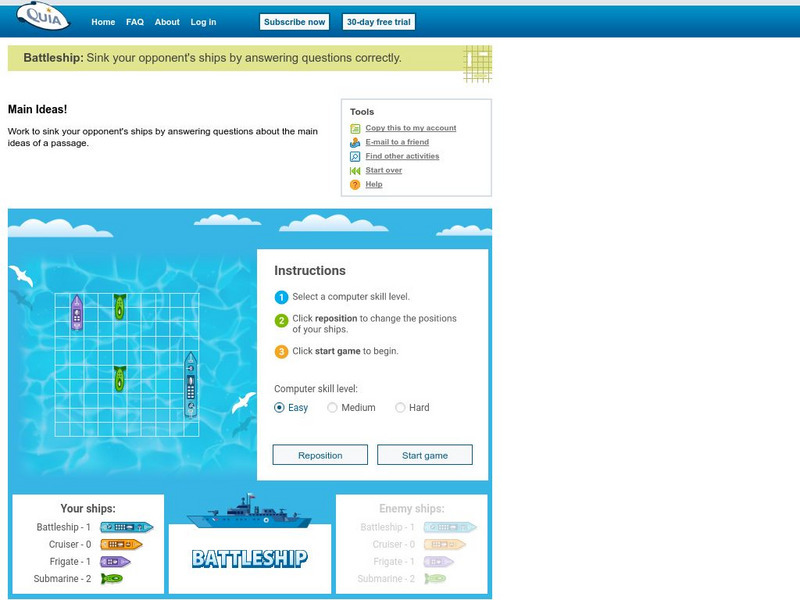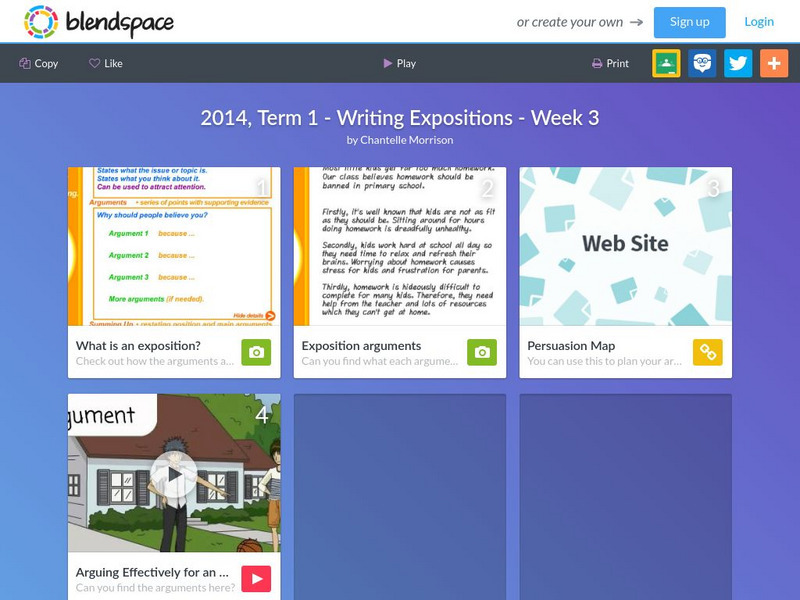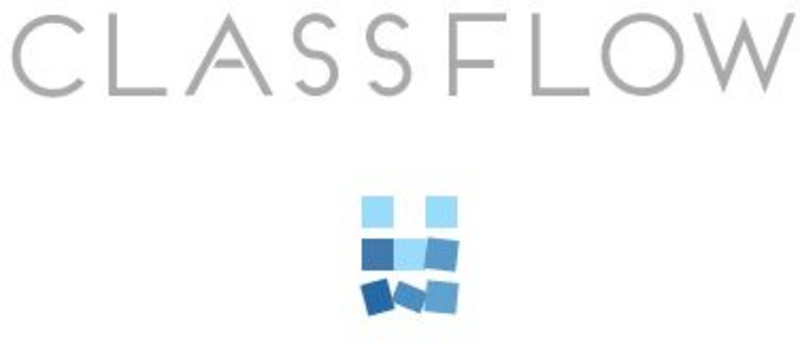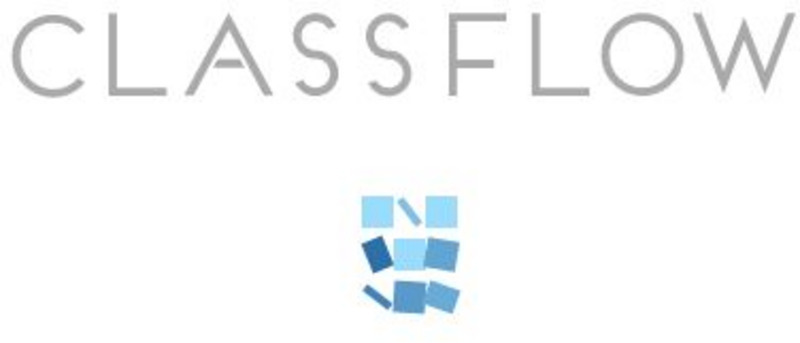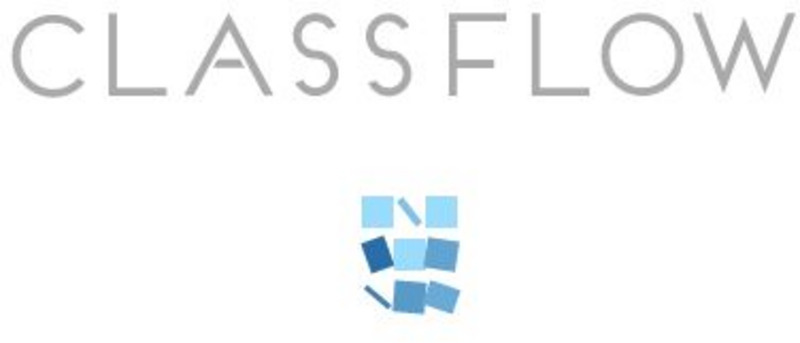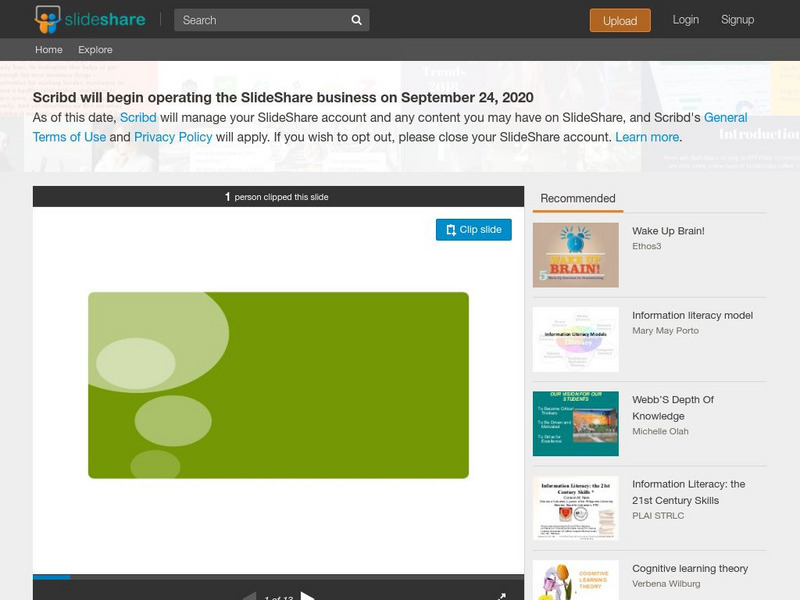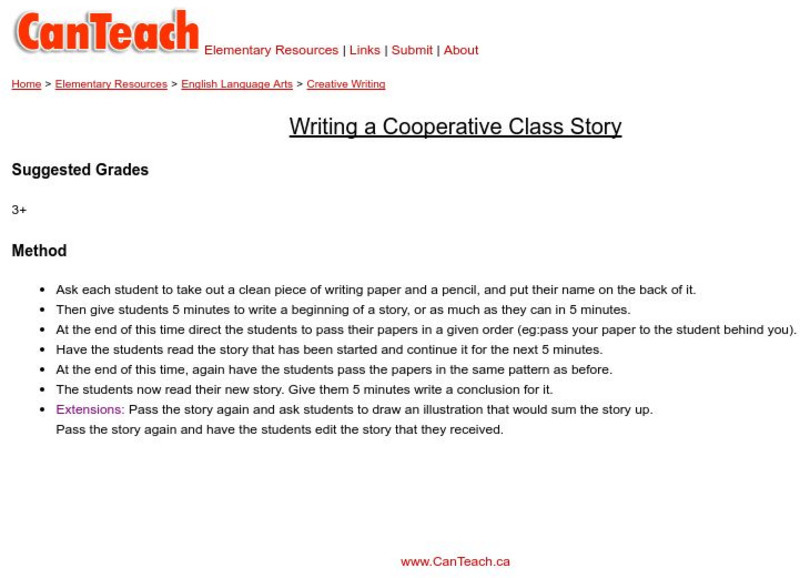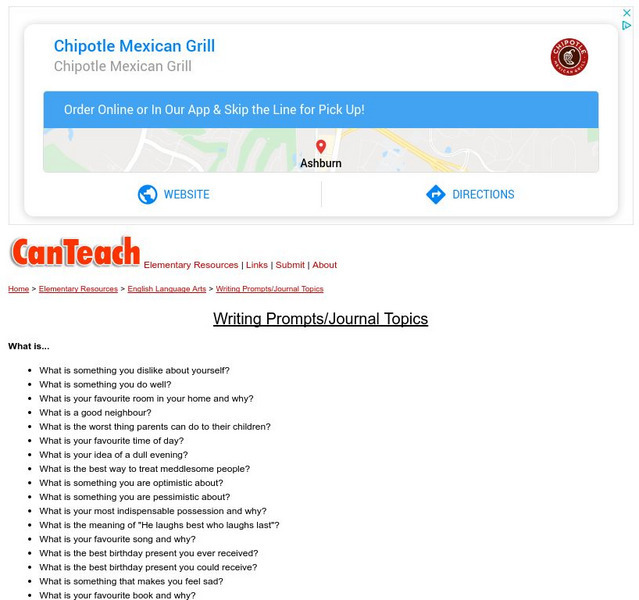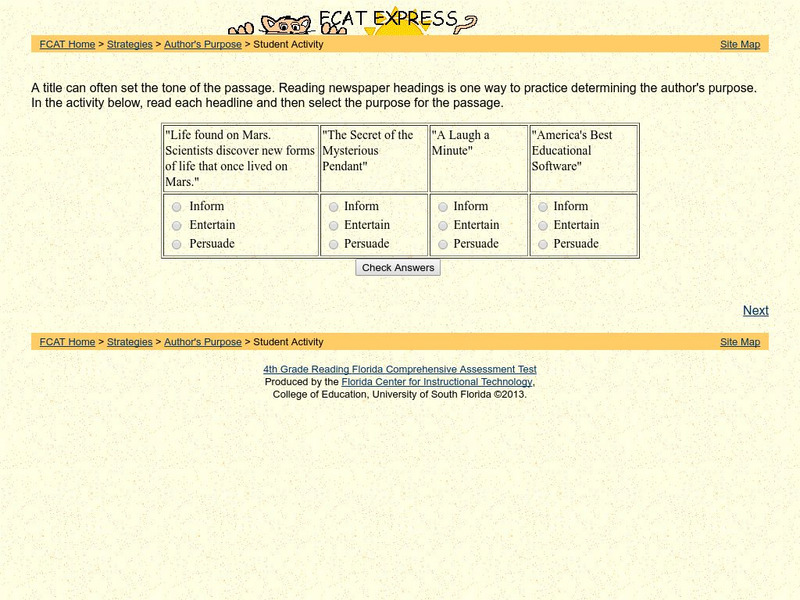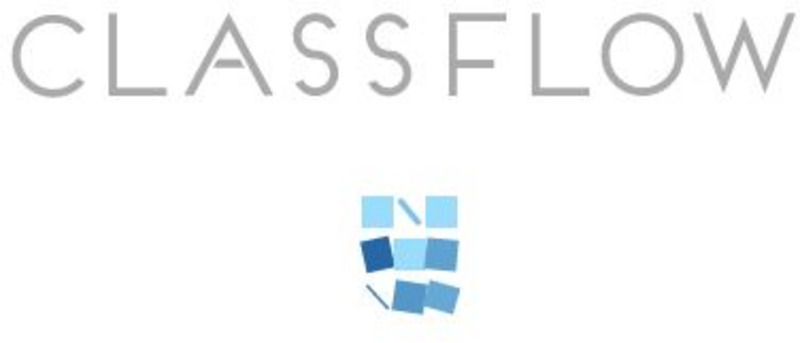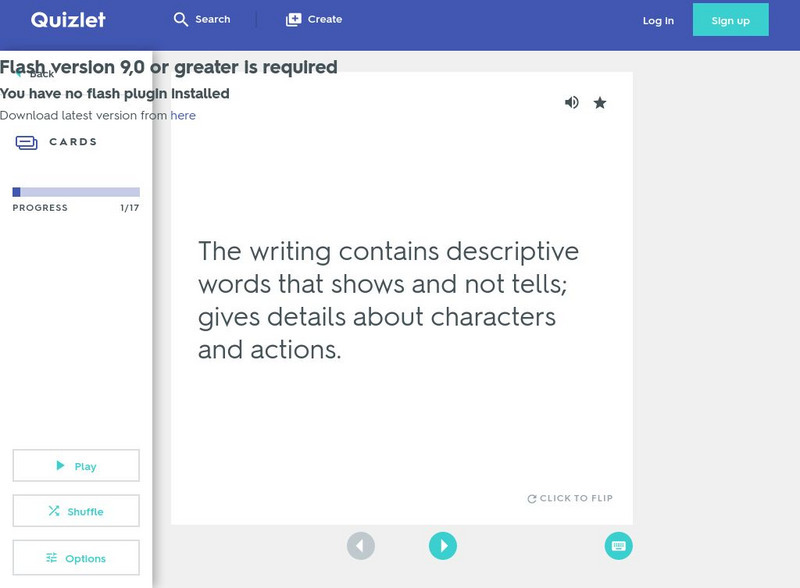Quia
Quia: Main Ideas!
Read a short text and determine the main idea in this Battleship style learning game.
Quia
Quia: 3rd Grade Main Idea
Read a short text and then choose the correct main idea in this three-question quiz.
Better Lesson
Better Lesson: Unit: Informational Text: Writing
This unit is designed to teach students about research writing. The lessons follow the format of Writer's Workshop. Many of the lessons provide a formula for students to follow while constructing their essays to ensure struggling readers...
TES Global
Blendspace: 2014, Term1 Writing Expositions Week 3
A four-part learning module with links to images, a website, and a video explaining how to write an argumentative piece.
TES Global
Blendspace: Traits of Writing
A six-part learning module with links to videos, images, and a rubric about the six traits of writing: ideas, voice, organization, word choice, fluency, and conventions.
TES Global
Blendspace: Argumentative Writing
A five-part learning module with links to websites, videos, and a text about writing an argumentative text.
TES Global
Blendspace: Expository Essay
A six-part learning module with links to videos, websites, and texts on writing expository essays.
ClassFlow
Class Flow: Paragraphs
[Free Registration/Login Required] Students will write simple, non-chronological reports from known information (e.g., from own experience or from existing text), using notes made to organize and present ideas. Students will learn to...
ClassFlow
Class Flow: Writing Showing Feelings
[Free Registration/Login Required] This elementary flipchart shows how writers express feelings. Instead of telling the reader, they show the reader through descriptive writing.
ClassFlow
Class Flow: Writing With Pizazz
[Free Registration/Login Required] This flipchart helps the students with the first step in the Six Traits Writing Process-- gathering ideas. Students are encouraged to analyze writing samples and brainstorm possible personal writing...
ClassFlow
Class Flow: Writing a Report or Essay
[Free Registration/Login Required] This flipchart is intended for grades 3-5 and outlines the steps in writing a report or essay.
ClassFlow
Class Flow: Book Important
[Free Registration/Login Required] This flipchart guides students through the writing process utilizing a framework for finding out the important things. It teaches them a structure for organizing their writing as well.
ClassFlow
Class Flow: Brainstorming
[Free Registration/Login Required] Several different examples of brainstorming: cluster/web, listing, circle graph, jot-chart/table. Has introduction, examples, and whole class brainstorming examples.
ClassFlow
Class Flow: Can You Tell?
[Free Registration/Login Required] This flipchart helps students to determine the difference between narrative and expository writing.
ClassFlow
Class Flow: Leads Part Ii
[Free Registration/Login Required] Students will recognize different types of leads and will choose which leads best fit different pieces of writing. This is a part of the process of organizing and revising a piece of writing.
Tom Richey
Slideshare: Creative Brainstorming
This slide presentation provides a background of why the process of brainstorming is important as well as elements and tools you can use to get your creative juices flowing.
Can Teach
Can Teach: Writing a Cooperative Class Story
In this lesson plan, students will write a cooperative class story, using brainstorming and editing skills. Lesson plan indicated for 3rd grade and above.
Can Teach
Can Teach: Writing Prompts and Journal Topics
This site has hundreds of writing prompts/journal topics to get students started writing. Topics like "what is" and "what if" will get students thinking about what they could write.
Love To Know Media
Your Dictionary: Teaching Kids About Reflective Writing
This site offers ideas to encourage children to practice reflective writing and tips for teachers to teach it.
University of South Florida
Fcat Express: Author's Purpose: Student Activity
An online learning activity where students read four titles and choose what the author's purpose for each text would be: to inform, to entertain, or to persuade.
ClassFlow
Class Flow: Building Creative Writing
[Free Registration/Login Required] This simple activity will enhance the descriptive writing of primary aged children. By building upon each page of the flipchart over a period of several days, it makes the students more aware of nouns,...
PBS
Pbs Teachers: Writing Development
Tour a portfolio of writing samples by one child from babyhood to third grade that help illustrate how writing develops naturally as well as the relationship between reading and writing. Consider literacy signposts at each level.
Quizlet
Quizlet: Text Structure: Flashcards
This interactive set of flashcards helps students to learn the terms and definitions for types of text structure, organizational patterns, and keywords and graphic organizers for the types of text structures.
Quizlet
Quizlet: Text Structure: Match
In this interactive game, students match the terms for the type of text structure to their definitions.


